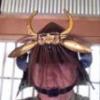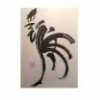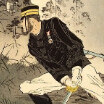Leaderboard
Popular Content
Showing content with the highest reputation on 02/03/2025 in all areas
-
The other day I did a quick test making a custom "luxury" tsuba box. The purpose with the box is, besides containing a tsuba of course, to skip the need for a pillow, as the padding in the lid keeps the tsuba in place. Box have soft open/close hinges and made so it will stay closed until you lightly “force” the lid open and hinges is designed to ensure lid stays open until you close it again... There is room for improvements, but this is the result so far...11 points
-
Hello everyone and thank you for all your support ! Finally the sword was delivered in "express" service after being sent to Limour (600km from home). The pack have suffered a little but the adress was very clearly wroten and unmystakable... Must important : the sword is fine, the sayagaki and the habaki were split a little probably by rude handling during this so long a journey... I am realy relived... and at the same time still angry : I had to wrote 2 times to the president and director of the group to have someone doing something... without telling SAV harassement and going any day to complain to post office (thanks to Brian's insurectionnal war tactics !). Thank you to all of you members, I wasn't alone and it was important ! Maybe admin could add SOLVED ! to the tittle, If I could help NMB or any member anyway: let me know (have an ID for NMB) sincerely yours, Eric V.9 points
-
3 points
-
I took a chance and bought this tsuba cheaply on a doubtful online trading website (seller was a small french botique), only having those poor very dirty (before) pictures below to judge from. However it cleaned up quite well, unfortunately the seal was too corroded to be able to read. I have searched through books, online and so on, but cant find anything that leads me in a more definitive direction of school or maker... So any help is very much appreciated - anybody having ideas on school/maker? I believe image is of Guan Yu (Kwan Yu) holding his long beard while reading, in the background his Kwan Dao. Tsuba have signature with gold seal/kaao, which unfortunately is impossible to read. Kwan Yu (or Kwan Kung), also known as Guan Yu or Kuan Yu, is a legendary Chinese general from the Three Kingdoms period and is often associated with qualities like bravery, loyalty, and protection. Measures: 6.8 cm x 7.4 cm x 0.50 cm Weight: 135g BEFORE & AFTER PICTURES: VIDEO:2 points
-
Newly polished blades procedure Once a day for a week once a week for a month once month for a year should be cured by then2 points
-
2 points
-
2 points
-
Hi Eric, Gun oil is fine for a Type 95 but not for others Type 98, 97 etc and Nihonto. I use Camellia or Choji oil on all of mine but that's only because have it. But you will receive other opinions Just search on oil on this website and you will find a wealth of knowledge (and opinion) in regard to looking after blades that are higher grade than 95's. If gun oil is good enough for you rifle in that climate, then its good enough for a 95 IMO. Only the blade that should need regular oiling but keep yiu eye on any rust that may develop on the saya. Unlike other Gunto and Nihonto, 95's are not made to be disassembled for maintenance and I advise against it as they don't always go back together as snugly, and besides there is nothing to see on the nakago.2 points
-
Simon, with nicely focused, not blurred photos, made on a dark background, tip always oriented vertically upwards, and some close-ups of KISSAKI and NAKAGO, it would be easier to make a guess. Anyway, the blade length is just 2 SHAKU (= 606 mm) which means you have a KATANA. Details like HAMON or HADA are not visible on these images, as the condition is rough. The SUGATA is reminding me of early EDO JIDAI, as the blade has a very shallow SORI (often seen in KANBUN era blades).2 points
-
A colleague of mine also has the 廣 kanji in his name. In that case, it's not related to old or new, that's just the way of writing it, and he said he accepted the use of 広 because the old kanji is not always known. As far as I know, on official papers, it should be 廣. I cannot comment on why the NBTHK used the new kanji instead of the new, especially if the mei uses the old kanji.2 points
-
2 points
-
the visible detail on ura side, and some other details visible on other pictures makes me think about soldering blister or rust inside weaker, creating delamination. On link second picture is showing similar detail on side, and on third picture it seems there is a bit of delamination in nakago ana visisible.2 points
-
If it was my sword, I would not just put oil on the NAKAGO but I would first clean off the red rust with a pointed piece of bone, antler, ivory, horn or copper.2 points
-
2 points
-
1 point
-
I would like to solicit the community's expertise on differentiating between kirikomi (I think that is the right term) present on the mimi of a tsuba that represent battle scars from sword strikes likely suffered during battle, as opposed to damage that is due to other causes NOT involving a blade making contact with the tsuba. It's in a location that is not on the mimi. Here is a shakoh tsuba that is attributed to Kanayama by NBTHK certificate. On the small section at 12 'oclock that attaches the central rays of light disc to the mimi, there appears to be a horizontal linear break in the surface. It is seen from multiple angles (see magnification of the same area rotated 180 degrees) and seems not to affect the full thickness of the tsuba because it does not appear on the ura. On the magnified pic there appear to be at least one globular/linear tekkotsu at 5 'oclock, which along with the wide squared rim and the shape of the hitsu-ana is a Kanayama feature. This looks like Momoyama/Early Edo work. This tsuba has the "2nd" style of the Jesuit rays of light (shakoh) motif in which the rays are equal in length rather than alternating long/short. Soon, the ban on Christians and Christianity would come into full swing. In the subsequent syles, the motif will soften and then become partially disguised to avoid persecution. https://world.seiyud...m/product/tu-010225/1 point
-
High quality shakudo will repatinate itself given time. The lower the quality of the shakudo the greater the chance it will not recover back to where it was originally. In fact, even chemical inducement may end in disappointment. Good quality shakudo when repatinated will not only take but will continue to become richer in the depth of color and be evenly distributed. One of the keys to a properly restored piece is that the restoration cannot be detected even by sharp eyes, "doesn't look new."1 point
-
Main concern with oiling blades is when you just got done having it polished, if you have an older blade you don't have to constantly oil it. one thin coat as long, as you don't take it out swing it around every day, the the thin coat will last very long time. Even in humid locations, like Iowa.1 point
-
I see you're in New Hampshire. Is it humid there? Humidity is your enemy. If so, you'll need to set up a routine (I don't know how frequent) of cleaning and re-oiling the blade. I have seen guys come to NMB with blades that developed rust even when they had oiled them. Display/storage runs a wide gamut from closets to fully desiccated glass cases. It just depends upon how much you are willing to spend, or how you wish to display for enjoyment.1 point
-
Teruyoshi studied with Hosokawa Masayoshi after he had received his initial training from Terukazu.1 point
-
Remembering also his memorable articles in the English Token Bijutsu... And (his??) book Japanese Swords in The Netherlands... BaZZa. EDIT: Maybe it was "Japanese swords in Dutch Collections"?1 point
-
Apologies, tip of the blade upwards is correct. Just shows how much I cannot ‘see’ what is written there, like a doctor or bank manager’s signature. I was expecting it to say 下坂 Shimosaka, but even that does not seem to fit happily!1 point
-
Ah, yes. I have seen this tsuba before. Very convincing because the extent of battle scars is linear across a large area and there are also multiple scars as one might expect from a fierce battle. Thanks for pointing me to the 2020 thread on tsuba battle scars. It's less credible when there is just a single small kirikomi on the mimi.1 point
-
The first three photos are upside down and almost equally blurred. The latest shot, while the correct way up, is also of quite poor quality for an attempted reading. It would need serious editing with contract, sharpness etc., to bring up the Mei to visual recognition standard. Better shots would be a better start.1 point
-
Along these lines, there can be some confusion identifying swordsmiths with the name “Kanekuni” depending which kanji for “kuni” is used. Commonly, publications (and certificates) in English use the simplified form 兼国, however, need to check the sword mei to show which “kuni” was used by the smith.1 point
-
The character for Masa that looks like the letter E is often replaced with one that looks like Roman number one.1 point
-
Thanks, Patrice. The diamond-shaped motifs that connect the inner disk to the mimi are points of relative weakness, I'm guessing. I'm not experienced enough to discern whether there is delamination. Any such delamination in the nakago-ana doesn't appear to be as clear as with the sanmei construction of Akasaka tsuba that I have seen. The high asking price for this piece is what you might expect for Kanayama, but I don't think this particular Shakoh composition is as lively and dynamic as the the "1st style" that corresponds to the earliest Jesuit image of the rays of light at the time Christianity was introduced to Japan by the Portugeuse. And there is this damage/defect. This one is from the Varshavsky Collection, attributed to 4th Gen Akasaka. This is presumably a later copy of the 1st style. I'm still looking for a good example...1 point
-
as far as i know the smith has to have passed away (otherwise he is the one to verify it was his work). otherwise it should not have fatal flaws and not be gimei. I think it is similar to NTHK and NBTHK others can comment further. I would think Chris B would know more (for NTHK-NPO)1 point
-
Hello, I saw that set, which I really like and would like to purchase, but I wish to know more about it. I asked additional pictures and all relied carvings seem to be zogan, as inside both parts, it's flat. I am thinking about maybe collecting fuchi and kashira sets, as things I want to keep now are two sets of fuchi and kashira. I was also asking myself how people used ot do the goild foil plating on such cmplex shapes, I saw the process on several fittings I own, and many gold zogan are foil on copper, I am really curious to know the process. I watched the Ford Hallam utsushi tiger tsuba and he used gold butter, but it seems some used gold foil, so the process was probably very difficult! I hope someone would be able to provide more informations!1 point
-
Another example is Toshi. 寿 - Shinjitai (new form) 壽 - Kyūjitai (old form) https://en.m.wikipedia.org/wiki/Kyūjitai1 point
-
The correct terminology is often the key to a better understanding. It has been mentioned before, but I will underline it here: There are no file-marks to be seen, it is (usually) a cross-hatched pattern made with a very sharp TAGANE. Gold or silver wire is punched (using a small TAGANE with a polished flat or very shallowly rounded tip) into this roughened surface where it sticks quite solidly. It is an ONLAY technique, not inlay. As mentioned above, the exceeding cross-hatched pattern is usually flattened with a MIGAKI-BO (burnishing steel rod). In this case, that step was omitted which results in a decorative but probably not high-end TSUBA. No evidence needed, everybody interested can read about it or watch the related videos.1 point
-
@OceanoNox - An interesting video. I take your point, I had always assumed that the "woven cloth" description referred to the effect achieved at the end of the process rather than the method used to achieve it and that, given there are a variety of methods for achieving an inlaid effect, some other method than nunome zogan was used where it didn't have the weave effect. Certainly in the video you posted, the gold is left proud of the surface and there is none of the woven effect showing through it, also it shows how the gold is spread into and over the grooves and which would also account for the varying thickness of gold effect in the tsuba posted first up and which made me think it was not inlaid wire. @JohnC - (and to others) - apologies, my error.1 point
-
It’s a bat on a pomegranate.Its Japanese. It has damage (section missing on the stalk…maybe there was another leaf) Age…..probably Meiji. Not a common subject matter.1 point
-
Hi Peter, one has the impression this was cobbled together recently. The Ito is brand new, the fittings are pretty hideous, random Seppa, and the Kabutogane appears to be from a Koa Isshin Mantetsu Koshirae.1 point
-
The file marks is how the gold is attached, it is pressed in to hold it in place. The file marks are visible because over time it has squashed in further and has worn. This is honestly really rudimentary stuff, there is no confusion here.1 point
-
Thanks to everyone's input, we are up to 35 known examples! So far, I think it's the most complete list out there (though not speaking Japanese, I can't be certain how many other lists survive somewhere else). In addition, patterns are starting to emerge suggesting which inspectors were working at which time and when inspector stamp placement started to change. As of yet, however, I have not been able to translate the seal scripts to get a sense of inspector names. Still researching that part. Here is the updated serial number list: 325, 487, 575, 1539, 1996, 2379, 2522, 3397, 3587, 4077, 4429, 5578, 5988, 6251, 6784, 8170, 8572, 8782, 9090, 9536, 9777, 10781, 11448, 11871, 13121, 13197, 14013, 14323, 14408, 15383, 15773, 16019, 16065, 16416, Unk serial number sold on Worthpoint. (35 as of 1-31-25) Again, I appreciate all the input for this project. John C.1 point
-
Hello dear Dee and Jean, I had quite hard time: after writing me that my parcel have been flashed the 8 january at 1h30 AM, it get lost a second time... I made another claim and every day calling the after sell service, going back to the post office any evening after work and mailing to any mail box avalliable : it appears to be found back the 14th ... and lost again this time "definitively". I wrote a very sharp letter, writen with the hell fire and I put it in copy to the groupe La poste président and exécutive director. Today they mailed me that the parcel have been "opened" and damagesd, they will repack it and send to me as soon as possible... I realy wonder what I am going to found, if it ever gets to me. Thanks for your support ! Friendly Eric1 point
-
I sincerely hope it will show up finally! I can tell a story about what can happen in the postal world of the 21st century, quite a while after horse carriages and sail ships were in use: Some years ago, I bought an item off a NMB member in American Samoa - not a valuable object. His next bigger post station was more than 4.000 km away from his place, in Honolulu, Hawaii. Somewhere on the long way to me, the parcel was lost. After I was told that I could do nothing about it as the buyer, the seller made a claim and started a serious query. This was not successful, the package did not show up, and he got fully refunded - in addition to what I had paid him already. But he was a gentleman and sent me my money back. The story did not end there. After more than 2 months, to my surprise the parcel was brought to my door by regular post! In the end, I got it for free! S**t happens, but lucky things as well!1 point
-
1 point
-
1 point
-
To somewhat address your question OP: Yes, you can get a sense of a timeframe for tsuba based on factors such as design, subject and more. 50 years as you mentioned—for example—is realistic, while a specific year is likely not. If you are seeking the fun of collecting including historical, societal or other factors in a tsuba…you can get fairly close. Note: this is a very simplified answer.1 point
-
First, let me say that I haven't had the occasion to use the downvote button, because my interpretation of it is likely different from others. That said, I am unaware of any rules specifically governing its use. That is to say no strict guidelines pertaining to how someone must "feel" in order to use it properly. As such, it would seem like the downvote button is a freedom afforded all who participate on this forum and every member has to right to use it according to their own individual interpretation of its meaning. This includes interpretations that others, perhaps even the majority, may find petty or pedantic. I haven't seen any cartoons or animated projections on this site that would otherwise appeal to a juvenile mindset. This is one of the many things that I appreciate about this site specifically. As such, it would also indicate we are all adults here and if there are those among us who are incapable of having a downvote cast on a post without taking it "personally", then I would say there are much larger issues in play. Having said that, irony unignored, this post may be responsible for my very first downvote, perhaps cast out of spite, a trait that although commonly found in adults, is in itself childish. Be that as it may, I can assure you my sleep will be unencumbered were this to happen, because I CHOOSE to make it so. Those who appreciate what I say....great. Those who disapprove......great. That's how the world works. So, how about we all take a deep breath and settle ourselves in the notion that we participate on this forum to contribute what we can and learn what we can. How that plays out to the masses, is on the masses and the very idea of trying to control it is quite futile.1 point
-
I have a slightly different view, after all, we are not in Japan and although I respect tradition and humility I like to live with my things, to see them when I walk around. It would be sad for me to tuck them away out of sight. I believe their original owners would have kept them visible in kake. Obviously be aware of children and pets and the curiously ignorant. Just my personal view.1 point
-
For years on this forum no one (hardly ever) used the red down-vote button. The first time I saw it not too long ago it was actually shocking, that someone had not bothered to speak or reason against a position. It seemed so harsh and point-blank. Suddenly it has become commonplace here, for whatever reason.1 point
-
It might be a good idea to change "Downvote" to "I don't agree with that" - it would be somewhat less aggressive for all. What say you Brian?1 point
-
That's an impressive level and takes real dedication. Thank you for replying in such detail and good luck with the tsuba collecting. They have just as much historical and artistic appeal as the swords. Sincerely, Dee1 point
-
Well Kung Foey, I am yodan level. If someone came to the dojo and stated what you said I would just have them sit and watch a class. Then after class I would explain the particular martial art that is taught and if they are still interested I would give them a coupple of free lessons. I have done that before (with sensei’s permission). Of course I have always been interested in Japanese art. And I have even practiced iaido. But real swords are expensive, that is why I am asking about tsuba and stayed with stamp and coins. My friend, who is also a martial artist collects some tsuba and got me interested and emailled me about the forum. Although they also can be expensive, I have seen some that are not expensive. So I think I will learn more about them, as others on the forum have stated some good information how to learn and then try my first purchase. I will wait for my friend to send me the beginner book, and I have also ordered some other books. In the meantime I will just keep training in martial arts and learn about tsuba collecting.1 point
-
Sorry about that. I took the pics of the mei with the tip up, similar to the other example, thinking it would be the same as swords. I'll try to get each part individually but my camera is limited. Thanks for taking a look. John C.0 points
-
Thanks for your replies and advice! I think it's a very interesting blade, and I will check out the references. It just baffles the mind how there are many smiths over centuries using the same name. Imagine the chaos if there were 10 Vincent van Goghs of varying skills active between 1750 and 1920 signing their paintings in the same way.0 points
This leaderboard is set to Johannesburg/GMT+02:00







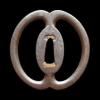


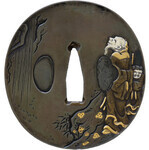


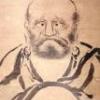


.thumb.png.9d2f3b630c440f3d63138bb73966f58f.png)





